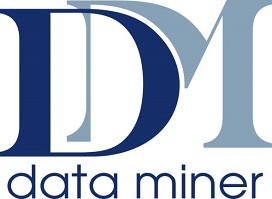About this course
This course will provide more advanced T-SQL knowledge for those who have attended the QATSQL or M20761A courses. This is not a beginner course. For those requiring a basic level of T-SQL for reporting then please review the QATSQL course first.
Audience profile
IT Professionals who will be writing queries for use with Microsoft SQL Server from SQL 2005 to 2016. Non-technical ‘power users’ will also benefit from the course if they are comfortable using sophisticated software tools like SQL Server Management Studio.
The course is aimed at both non-technical ‘power users’ and IT Professionals who will be writing queries for use with Microsoft SQL Server.
Module 1: Using Table Expressions
This module introduces T-SQL expressions which return a valid relational table, typically for further use in the query. The module discusses views, derived tables, common table expressions and inline table-valued functions.
Lessons
- Using Derived Tables
- Using Common Table Expressions
- Using Views
- Using Inline Table-Valued Functions
Module 2: Using Set Operators
This module introduces the set operators UNION, INTERSECT, and EXCEPT to compare rows between two input sets.
Lessons
- Writing Queries with the UNION Operator
- Using EXCEPT and INTERSECT
- Using APPLY
Module 3: Using Window Ranking, Offset, and Aggregate Functions
This module introduces window functions including ranking, aggregate and offset functions. Much of this functionality is new to SQL Server 2012. It will cover the use of T-SQL functions such as ROW_NUMBER, RANK, DENSE_RANK, NTILE, LAG, LEAD, FIRST_VALUE and LAST_VALUE to perform calculations against a set, or window, of rows.
Lessons
- Creating Windows with OVER
- Exploring Window Functions
Module 4: Pivoting and Grouping Sets
This module discusses techniques for pivoting data in T-SQL as well to introduce the fundamentals of the GROUPING SETS clause. It will also cover the use of GROUP BY ROLLUP and GROUP BY CUBE syntax in SQL Server.
Lessons
- Writing Queries with PIVOT and UNPIVOT
- Working with Grouping Sets
Module 5: Programming with T-SQL
This module provides a basic introduction to T-SQL programming concepts and objects. It discusses batches, variables, control of flow elements such as loops and conditionals, how to create and execute dynamic SQL statements, and how to use synonyms.
Lessons
- T-SQL Programming Elements
- Controlling Program Flow
Module 6: Implementing Error Handling
This module introduces the use of error handlers in T-SQL code. It will introduce the difference between compile errors and run-time errors, and will cover how errors affect batches. The module will also cover how to control error handling using TRY/CATCH blocks, the use of the ERROR class of functions, and the use of the new THROW statement.
Lessons
- Using TRY / CATCH Blocks
- Working with Error Information
Module 7: Implementing Transactions
This module introduces the concepts of transaction management in SQL Server. It will provide a high-level overview of transaction properties, cover the basics of marking transactions with BEGIN, COMMIT and ROLLBACK.
Lessons
- Transactions and the Database Engine
- Controlling Transactions
- Isolation Levels
Delegates should have knowledge to the level of QA’s QATSQL or M20761A courses. This is not a beginner course. For those requiring a basic level of T-SQL for reporting then please review the QATSQL course first.
Auditoriniai mokymai
| Pradžios data | Trukmė, d. | Kurso pavadinimas | Kaina, € | Statusas |
| Užklausti | 5 | 20761: Querying Data with Transact-SQL | 1500 | Organizuojamas |
| Užklausti | 5 | 20764: Administering a SQL Database Infrastructure | 1500 | Organizuojamas |
| Užklausti | 5 | 20767: Implementing a SQL Data Warehouse | 1500 | Organizuojamas |
| Užklausti | 4 | 10987: Performance Tuning and Optimizing SQL Databases | 1400 | Organizuojamas |
| Užklausti | 5 | 20762: Developing SQL Databases | 1500 | Organizuojamas |
| Užklausti | 5 | 20765: Provisioning SQL Databases | 1500 | Organizuojamas |
| Užklausti | 3 | 10988: Managing SQL Business Intelligence Operations | 1200 | Organizuojamas |
| Užklausti | 3 | 20768: Developing SQL Data Models | 1200 | Organizuojamas |
| Užklausti | 3 | 10989: Analyzing Data with Power BI | 1200 | Organizuojamas |
| Užklausti | 5 | 10990: Analyzing Data with SQL Server Reporting Services | 1500 | Organizuojamas |

